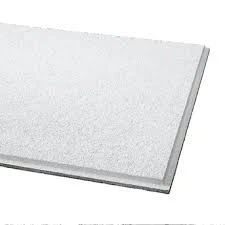Nov . 10, 2024 05:23 Back to list
Exploring the Benefits of Gypsum and Grid Ceiling Systems in Modern Interiors
The Role of Gypsum in Grid Ceilings
In modern architecture and interior design, the materials used in construction and decoration play a crucial role in determining the overall aesthetic, functionality, and durability of a space. Among these materials, gypsum has emerged as a popular choice, especially when integrated into grid ceiling systems. This article explores the significance of gypsum in grid ceilings, discussing its properties, applications, and advantages.
Understanding Gypsum
Gypsum is a naturally occurring mineral composed of calcium sulfate dihydrate. Its unique properties make it an ideal material for various construction applications. When processed, gypsum can be used in several forms, most commonly as gypsum boards or plaster. The versatility of gypsum has made it a staple in building construction, particularly in partition walls and ceilings.
One of the most innovative uses of gypsum is in grid ceiling systems. These systems are composed of a framework of metal or other materials (the grid), into which gypsum tiles or panels are fitted. This approach allows for a lightweight, easily installed ceiling that offers both aesthetic appeal and practical solutions for interior spaces.
Advantages of Gypsum in Grid Ceilings
1. Lightweight Nature Gypsum panels are significantly lighter than traditional ceiling materials like concrete or hardwood. This makes them easier to handle and install, reducing labor costs and time on site. The lightweight nature also reduces the load on the building's structure, making it a safer option in terms of weight distribution.
2. Fire Resistance One of the standout features of gypsum is its fire-resistant properties. Gypsum walls and ceilings can help slow the spread of flames and provide additional time for occupants to evacuate in the event of a fire. This capacity is particularly valuable in commercial buildings or public spaces, where safety standards are paramount.
3. Acoustic Performance Gypsum grid ceilings can significantly improve the acoustic quality of a space. The material absorbs sound, which helps to reduce noise levels and enhance privacy within an environment. This characteristic is particularly important in offices, schools, and healthcare facilities where distractions can hinder productivity and comfort.
gypsum and grid ceiling

4. Aesthetic Versatility Gypsum can be manufactured in a wide variety of designs and finishes. Whether aiming for a sleek, modern look or a more traditional appearance, gypsum panels can be customized to meet design requirements. This adaptability allows architects and designers to create visually appealing spaces without compromising on functionality.
5. Ease of Maintenance Gypsum ceilings are relatively easy to maintain. They can be painted, cleaned, or repaired without needing to replace the entire ceiling structure. This longevity translates into reduced costs over time, making gypsum a wise investment for property owners.
6. Energy Efficiency The use of gypsum in grid ceilings can contribute to building energy efficiency. The insulating properties of gypsum help regulate temperature, leading to reduced heating and cooling costs. Additionally, the ability to integrate lighting fixtures within the grid ceiling system can help optimize energy use in commercial and residential settings.
Applications of Gypsum Grid Ceilings
Gypsum grid ceilings are used in various environments, from commercial buildings and offices to schools, hospitals, and homes. In commercial spaces, they serve not only as a beautiful aesthetic element but also as a practical solution for concealing ductwork, electrical wiring, and plumbing.
In educational institutions, the acoustic benefits of gypsum grid ceilings help create conducive learning environments, while in healthcare settings, the fire resistance and ease of maintenance are invaluable. In residential applications, these ceilings enhance the visual appeal of living spaces while providing functional benefits.
Conclusion
In summary, gypsum's integration into grid ceiling systems highlights the innovation in modern building materials. Its lightweight nature, fire resistance, acoustic properties, aesthetic versatility, ease of maintenance, and contribution to energy efficiency make it an ideal choice for various applications. As the demand for sustainable and functional design continues to rise, gypsum and grid ceilings will likely remain at the forefront of interior design trends, paving the way for more intelligent architectural solutions in the future. Whether for commercial or residential use, the partnership between gypsum and grid ceilings exemplifies how thoughtful material choices can enhance both form and function in our built environments.
-
Quality Ceiling Trap Doors & Access Panels | Easy & Secure AccessNewsAug.30,2025
-
Durable Ceiling T Grid Systems | Easy InstallationNewsAug.29,2025
-
PVC Gypsum Ceiling: Durable, Laminated Tiles for Modern SpacesNewsAug.28,2025
-
Pvc Gypsum Ceiling Is DurableNewsAug.21,2025
-
Mineral Fiber Board Is DurableNewsAug.21,2025
-
Ceiling Tile Clip Reusable DesignNewsAug.21,2025







